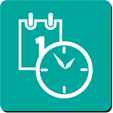Timing and Scheduling Accommodations
Instructional and testing accommodations are generally grouped into four categories:
- Presentation
- Response
- Setting
- Timing and Scheduling
In each of these, the accommodation is designed to help the student to demonstrate his or her knowledge. Keep in mind, though, that accommodations should be individualized and not based on a specific disability category. Additionally, some of these accommodations can be bundled—that is, used in combination—depending on a student’s individual needs.
 Timing and scheduling accommodations allow students extra time to complete an activity or a test. When teachers adjust the timing and scheduling of instructional tasks and tests, they can support their students by reducing their fatigue or stress. The table below includes some examples of possible timing and scheduling accommodations.
Timing and scheduling accommodations allow students extra time to complete an activity or a test. When teachers adjust the timing and scheduling of instructional tasks and tests, they can support their students by reducing their fatigue or stress. The table below includes some examples of possible timing and scheduling accommodations.
| Timing and Scheduling Accommodations |
Teachers might:
|
Guiding Questions for Teachers
When they are considering whether their students might require adjustments to timing and scheduling to complete activities and tests, teachers should ask themselves some guiding questions. For example, do their students:
- Process information more slowly than their peers?
- Take medications that may lower their energy level?
- Fatigue easily?
- Become frustrated easily?
- Use assistive technology or other equipment that requires more time to complete activities or assessments?
- Need frequent breaks?
- Readily become anxious?
- Have difficulty focusing on a task?
- Need more time to navigate educational environments?
Timing and Scheduling Accommodations in Action
 Katie is an eight-year-old third-grade student. She has difficulty organizing materials, focusing on assignments, and sitting still for long periods. She often has tantrums or displays emotional outbursts in the classroom if she is not able to complete her work. With timing and scheduling accommodations, however, Katie is able to complete the same content as her grade-level peers.
Katie is an eight-year-old third-grade student. She has difficulty organizing materials, focusing on assignments, and sitting still for long periods. She often has tantrums or displays emotional outbursts in the classroom if she is not able to complete her work. With timing and scheduling accommodations, however, Katie is able to complete the same content as her grade-level peers.

Susan (Katie’s mom)